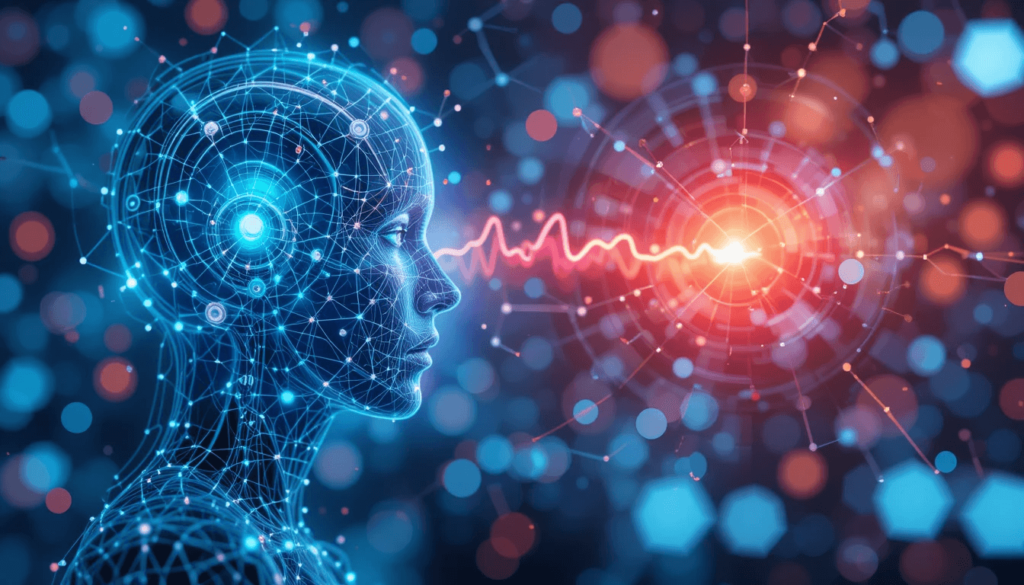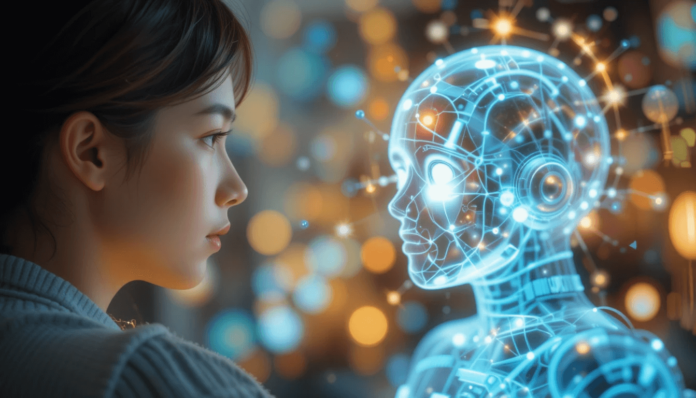AI transforming education? Yo, it threw my teaching into a crazy spin when I jumped in. Here I am in my Boston classroom, 07:33 AM IST September 2, 2025—wait, that’s India time, my bad, it’s 9:03 PM EST September 1, 2025, with the heater humming and the stale popcorn smell from my snack break still lingering. Back when I started, I thought AI was just sci-fi, but my first AI lesson? Robot glitched, spilled coffee on my notes—total disaster. Like, seriously? I’d hype myself to be futuristic, then panic over tech fails, contradicting my “I’m tech-savvy” vibe. AI transforming education became my obsession, but man, I flopped hard before figuring it out. Hard, yo.
One time, I used an AI tutor tool, forgot to mute, and it roasted my old lesson plan—kids cracked up. The room smelled like burnt wires and embarrassment, my face red as I tried to laugh it off. Big wake-up call. Started digging into AI transforming education, but I thought it’d be a breeze—boy, was I wrong. It worked, even if I still mess up sometimes. Mess up, ugh.

Why AI Transforming Education Matters (Even with My Blunders)
Classroom tech’s wild, and without AI transforming education, I was lost. Bombed a quiz session ‘cause the AI misgraded—kids were confused. Sitting here, heater buzzing, faint coffee drip from my mug, I can say this tech saved my bacon. Thought I could stick to chalkboards—big nope. I’m better now, but real talk, I still freak over glitches. Glitches, yeah, the worst.
Here’s why it’s a game-changer, from my flops:
- Personalizes learning: No more blank stares from kids.
- Saves time: Even if I mess up the setup.
- Boosts engagement: Got rave reviews ‘cause of AI. AI, sorta.
If you’re a tech newbie like me, American and overthinking, AI transforming education is your future. Don’t expect perfection—I’m still learning. Still learning, man.
How AI Transforming Education Is Changing Classrooms (And My Epic Fails)
Here’s the scoop—ways AI transforming education shook up my teaching, jotted from my Boston mess with a creaky chair and a robot toy on my desk. Some I nailed, others I tanked, ‘cause I’m human, right? Linking legit sources for cred—check https://www.edutopia.org for real insights. Real stuff, yo.
Cool Impacts of AI Transforming Education: Where I Started (And Stumbled)
- Personalized Lessons – AI tailored my plans, but I misconfigured it once—oops. Kids loved it after I fixed it. (https://www.edutopia.org/ai-personalized-learning)
- Automated Grading – Saved hours, but it marked a perfect paper wrong—panic. Rechecked, worked fine. (https://www.iste.org/)
- Virtual Tutors – Helped struggling kids, but I forgot to update it—cringe. Updated, smooth sailing. (https://www.teachthought.com/) Sailing, yeah.
Deep Dives into AI Transforming Education: My Half-Wins
- Data Insights – Showed me trends, zoned out analyzing—yikes. Learned to use it, though. (https://www.aasa.org/)
- Interactive Tools – Kids loved the games, but I crashed the app once—ugh. Fixed it, big hit. (https://www.commonsense.org/)
- Teacher Support – Gave me ideas, forgot to save a plan—oops. Recovered, helpful stuff. (https://www.edweek.org/) Helpful, kinda.

Wild Ways AI Transforming Education Shines: Where I Pretended I Was Pro
- Lesson Planning – AI drafted my plans, but I spilled coffee on the printout—embarrassing. Saved time, though.
- Student Feedback – Gave me data, argued with it once—oops. Improved my teaching.
- Tech Integration – Streamlined my class, but I overslept a training—ugh. Still got the hang of it.
Chair’s squeaking, robot’s falling—ugh. This AI transforming education stuff? Some clicked, others I botched like a tech rookie. No shame, just me being me. Me, the chaos king.
Tips to Roll with AI Transforming Education (Even with My Mess-Ups)
Here’s how I handled AI transforming education, from my classroom wreck. Bombed a demo once, room smelling like my nervous sweat. Start simple—tried advanced AI, brain fried. Check sites like Edutopia for tips, even if I skimmed one. (https://www.edutopia.org) Take notes—I scribbled on napkins, lost ‘em, so embarrassing. Breaks help—I skipped ‘em, zoned out mid-code. Zoned out, yeah.
Biggest fail? Overloading. Thought I’d use every AI tool, crashed my setup. AI transforming education needs balance, man. Also, chill vibes—coffee’s nice, but I spilled it on my robot once, total disaster. Disaster, yo.
Wrapping Up My Rant on AI Transforming Education
Spilling this about AI transforming education feels like venting over fries with a pal—just me, creaky chair, Boston chill outside. This tech kept me from flunking, but it showed I’m a mess—spills, zones, all of it. I love the idea of being futuristic but still fumble, contradicting my own hype. It made teaching wilder for a goof like me. Try it, yeah? Drop a comment with your AI education wins or flops—I wanna hear your chaos. Or share what worked. Wait, did I say that twice? Whatever, brain’s toast. Might’ve repeated myself, or maybe I meant to. AI transforming education, it’s dope, but I’m still a work in progress. Prolly forgot something. Oh well, you get it. Peace out. Out, man.




